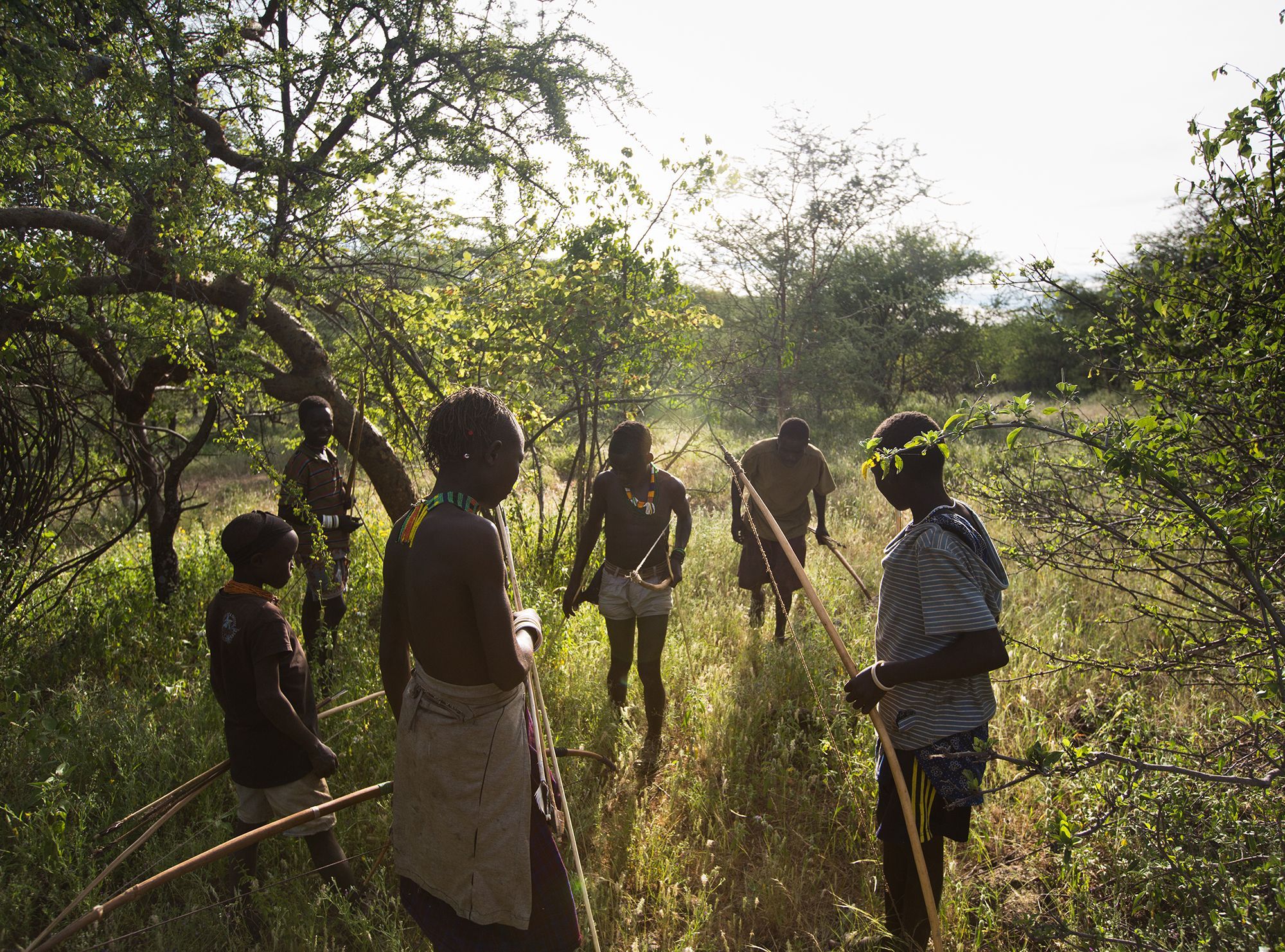4 Which Best Describes Early Hunter-gatherer Communities Points 1
Hunter gatherers could exist in the same areas as farmers and could snack on the farmers wheat crops. 4The discovery of agriculture around 8000 BCE would lead to which of these.

How Farming Almost Destroyed Ancient Human Civilization Ancient Humans Neolithic Revolution Neolithic
EK5 answer choices.

. A nomadic hunter-gatherer society. The hunter and gather era is to the agricultural era as the neolithic era is to the paleolithic era neolithic era is to the ice age era paleolithic era is to the neolithic era paleolithic era is to the ice age era. Of the following statements which best describes the lives of nomadic hunter-gatherers.
The rise of hunter-gatherer civilization. They farmed and raised livestock. Hunter-gatherer culture is a type of subsistence lifestyle that relies on hunting and fishing animals and foraging for wild vegetation and other nutrients like honey for food.
Quizlet Plus for teachers. When did significant cultural differences emerge among humans. Evidence of fire exists at early Homo erectus sites including 15 million-year-old Koobi Fora in Kenya though these may be the remains of wildfires.
The concepts of cooperation and democracy were founded. Hunter gatherers were people who lived by foraging or killing wild animals and collecting fruits or berries for food while farming societies were those that depended on agricultural practices for survival. People lived in a constant state of fear as to when the next flood would hit.
3Which statement BEST describes hunter-gatherer societies. The evolution of fashion from the earliest civilizations until the fourteenth century is best described as a slow process. Before agriculture was introduced all human beings were hunter gatherers.
Until approximately 12000 years ago all humans practiced hunting-gathering. Hunter-gatherer societies stand in contrast to the more sedentary agricultural societies which rely mainly on cultivating crops and raising domesticated animals for food production although the boundaries between the two. 2What human advancement led to the formation of villages.
A movement of people or animals from one region to another. The final score is 66 100 1. Learn vocabulary terms and more with flashcards games and other study tools.
However before farmers no wheat. Search for an answer or ask Weegy. Land around the river was fertile and capable of supporting farming.
They developed with the advent of settled agriculture. They developed when humans began to. 1 point Carson McCullers Alfred Uhry Tyler Perry Benny Andrews 2.
A nomad is someone who lives by traveling from place to place. People who hunt animals and gather wild plants seeds fruits and nuts to survive. They made stone tools and weapons.
Nomadic hunter-gatherer tribes follow the animals they hunt carrying tents with them. Which describes one way that early hunter-gatherers got food. Time period until 10000 years ago where people used stone tools.
Nomadic thus means anything that involves moving around a lot. They formed groups for protection. They settled in walled villages.
A non-nomadic society that does not have an organized central government. Because rivers like the Nile Tigris and Euphrates flooded in ancient times. Which of the following best describes how early hunter-gatherers migrated between Siberia and Alaska and entered the Americas.
GLE 641 Populations in coastal areas grew more quickly because moderate climates allowed for greater production of food. So when everybody was a hunter gatherer nobody had wheat. I think b d and a.
Hunter-gatherers never lived in the Americas. Start studying Art 105 TEST 1 MINDTAP QUIZ QUESTIONS ch. They crossed the Atlantic Ocean in man-made boats.
Select the three correct answers. The evolution of the human trophic level during the Pleistocene Wiley. Which statements best describe prehistoric hunter-gatherers.
They used tools to kill animals. Diverse hunter-gatherer and agrarian complex - Indigenous communities are the terms best describes the native American communities in North America in the sixteen century. A hunter-gatherer is a human living in a society in which most or all food is obtained by foraging.
B Clans tended to stay away from water sources as there were natural predators living in rivers lakes and streams. Anthropologists have discovered evidence for the practice of hunter-gatherer. Unit 4 lesson 13 Georgias Cultural Achievements Responses saved.
Who wrote The Heart is a Lonely Hunter. Question 1multiple choice worth 4 points compare the lifestyles of hunter-gatherers with those of settlers of early agricultural communities. That was the approach taken by a cross-disciplinary team of scientists and researchers in a paper published in The American Journal of Physical Anthropology in 2021.
Fire enabled hunter-gatherers to stay warm in. Who is a musician. 1Which of these is MOST associated with the Neolithic Era.
They crossed into the Americas when water levels dropped and exposed a land bridge. Which best describes your ability to work with exponents. The paper attempted to determine the.
A society that treats all people with a high degree of equality. What terms best describes the native American communities in North America in the sixteen century. They developed while they were hunter-gatherersThey developed when hominins moved out of Africa.
One of the main differences between hunter gatherers and farming societies. Which statement describes a main trend shown in the way that the human population grew between AD. A hunter-gatherer is a human living a lifestyle in which most or all food is obtained by foraging and hunting in the same way that most natural omnivores do.
1 on a question. A strip of land connecting two continents. They discovered how to use fire.
The Real Paleo Diet. This was of course too late to be included in either Burn or Exercised. A To make it easier for people to move around items like tools and shelter were made so that they were easy to carry.


No comments for "4 Which Best Describes Early Hunter-gatherer Communities Points 1"
Post a Comment